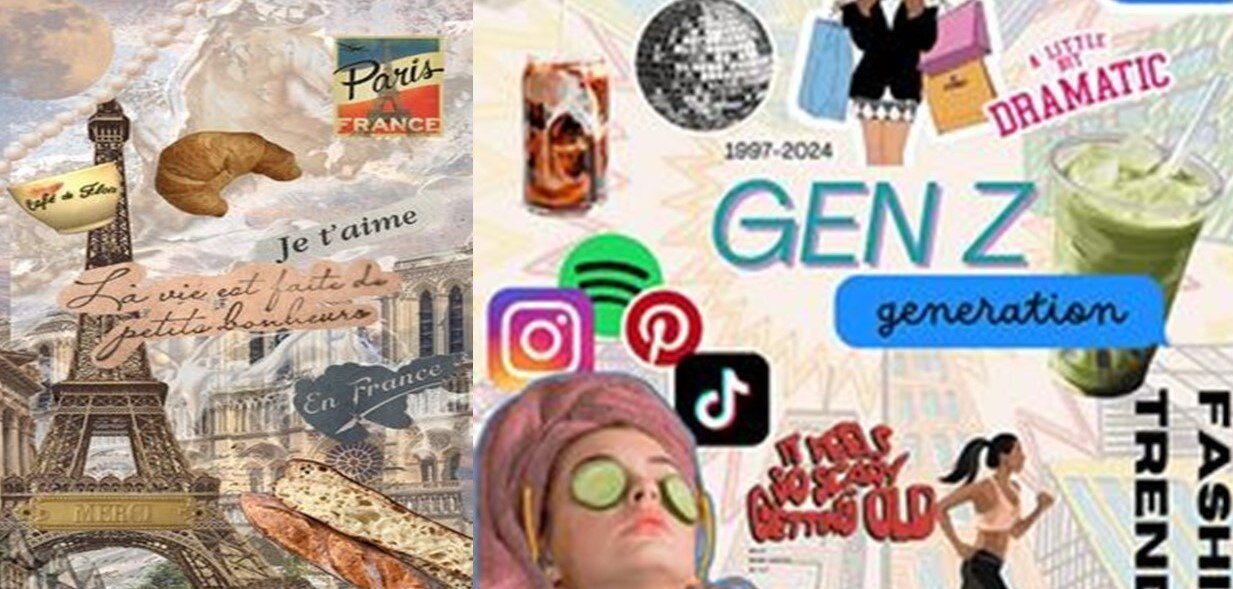The timeless allure of nostalgia
Nostalgia has a unique ability to transport us back to cherished moments, making it a powerful tool for marketers. It taps into our emotions, creating an immediate, irrational, and very 'System 1' feeling of comfort and familiarity, leaving us all warm and fuzzy.
The resurgence of retro-inspired media, such as Fallout, Mad Men, or more recently, Stranger Things, illustrates this power vividly. Stranger Things, in particular, meticulously recreated 1980s culture, not only captivating audiences but also catapulting Kate Bush’s 1985 hit "Running Up That Hill" back into the spotlight. In a similar vein, the recent buzz around the reunion of Oasis has ridden the wave of 90s nostalgia, proving once again that what’s old can indeed become new again.
However, what is intriguing in these various nostalgia plays is that their appeal stretches far beyond those old enough to have experienced them first-hand. Interestingly, the weighty 'power of the past' appears to transcend eras. This is most apparent, arguably, in the realm of music, where several generations have rediscovered and embraced iconic bands and artists from the 1970s. This is evidenced by the growing ubiquity of Led Zeppelin, Pink Floyd, and Bob Marley T-shirts adorning teenage torsos today.
During the uncertain times of the Covid-19 pandemic, people sought comfort through familiarity. For many, this led to a renewed interest in traditional, hands-on activities such as gardening, board games, jigsaws, and, for some reason, homemade sourdough bread! While this trend might well have been born out of a conscious effort to avoid busy supermarkets, it soon became emblematic of a broader societal yearning for simplicity and authenticity – both for Boomers fondly recalling the good old days, and for Zoomers longing for the simpler, more carefree lives of their parents. Crucially, it offerered people a reconnection with 'the past', much like how retro brand design can evoke feelings of warmth and comfort.
This tendency towards revival is, of course, not limited to entertainment. In the world of consumer goods, nostalgia has long been a strategic asset in packaging and brand design. By leveraging nostalgic elements, brands can rekindle the emotional connections consumers have with their past, creating a powerful sense of affection and loyalty.
Nonetheless, this strategy is not without its challenges and requires careful execution. After all, wanting to be a beautiful classic car is one thing, but having an overreliance on ‘residual’ codes will likely leave you looking more like a clapped-out old banger.
The role of nostalgia in branding
Nostalgia serves as a bridge between the past and present, enabling brands to tap into deep-seated emotions and memories. By playing on the emotional and irrational nature of human beings, it’s a psychological tool that, when used correctly, can strengthen consumer bonds and enhance brand loyalty.
To illustrate this point, I have chosen 3 different approaches brands have adopted to tap into the power of the past to solidify their positioning and drive stronger engagement today.
- Back To the Future (Pepsi Global Rebrand)
- Trip Down Memory Lane (Cadbury 200 year Celebration)
- Retro Chic (Tony’s Chocolonely)
1) Back to the future
Pepsi’s recent global rebrand is a prime example of retro-inspired design for a future-facing brand.
After several modern iterations, Pepsi may seem to have returned to a design that shares more in common with its 1970s aesthetic than its more recent incarnations.

While this undeniable glance to the past will have created an immediate, visceral response in consumers, evoking fond memories of a bygone era and rekindling feelings of trust and familiarity, there is equally a clear ‘urban edge’ to the design grounding it in today and propelling it into the future.
A number of key differences emerge when comparing the new design with its predecessors. Namely, the typeface is more stylised carefully combining crafted curves and right-angles, most notable at the top of the ‘I’ and the angled (rather than rounded) contours of the ‘P’s.
The contemporary feel of the design also shines through in the brighter, more electric blue. This, combined with the containment of the wordmark within the roundel lends the visual identity a modern ‘app-like’ appearance.
Those familiar with the broader campaign will also have seen the ‘pulse’ design where the brandmark expands beyond the pack – visually ‘pulsating’ across the background.
By ensuring that the re-brand is ‘inspired by’ and not ‘stuck in’ the past, Pepsi was able to deliver an aesthetic that taps strongly into both classic and contemporary codes. In doing so, removing the "You had to be there" element of nostalgia enabled them to invite younger generations into the fold.

Semiotician and founder of Sign Salad, Alex Gordon, highlighted in a recent interview the rising levels of stress and anxiety among the youth of today and how looking back to the past can be an antidote to modern hectic lifestyles and inconveniences:
“Pepsi’s re-brand has both revived and re-invented the imaginary more innocent world of the late pre-digital 20th century with all its satisfactions, as a substitute for a digitally-driven 21st century with all its manifold disappointment and anxieties.”
Dr Alex Gordon – Sign Salad
2) A trip down memory lane
A much more direct play on nostalgia can be seen in Cadbury’s recent limited edition packaging to commemorate the brand’s 200-year heritage and support their Generations of Generosity campaign. The vintage style of their early 20th century packaging recalls their long-standing legacy of being synonymous with milk chocolate in Britain and beyond.

Unlike in the Pepsi rebrand, this more literal reference to past designs is required to authentically celebrate the brand’s 200th anniversary (1824-2024). In being a limited-edition series, the task at hand is inherently more ephemeral and campaign-based vs a new direction for the brand.
It would be reductive, however, to assume that this limited edition only addresses those who were alive at the time, proudly shouting out “I remember that!”
While the more recent examples of the 70s, 80s and 90s will harbour greater nostalgic appeal for older customers who remember the designs from their youth, the designs from 1915 and 1940 work in a slightly different way. In addition to providing shoppers with a privileged window into times of old, the designs hark back to an era where many products were still hand-made. By conjuring up imagery of this period, Cadbury can implicitly convey the emotional warmth associated with having care and passion for your craft - made with love.
In this instance, the campaign is less about borrowing from the old to become new again, and more like a grandfather brand taking customers by the hand for a trip down memory lane.
3) Retro chic
Despite the brand’s young age, the design cues and codes present in the packaging of Tony’s Chocolonely bear all the hallmarks of retro culture.

From the funky typeface to the vibrant colour palette, and the paper-over-plastic outer wrapping, the brand uses its design language to cue associations with the 70’s. However, despite being the grooviest chocolate on the planogram, it wasn’t until 2005 that Tony’s made its appearance with the iconic ‘red bar’. The question, then, is why would a brand go to such lengths to appear 20 to 30 years older?
One of the practical advantages is, of course, shelf stand-out. With nothing else on the shelf looking quite so 70’s chic, it’s easy to spot and identify this unique slice of time amidst its competitors. The paper wrapping, and ‘old school’ appearance are redolent of candy stores on street corners, with the promise of hand-made care in every bar.
Our Chief Creative Officer, Matt Michaud, shared his point of view on the brand and its retro appeal:
“Tony's is a great example of retro branding that taps into strong feelings of nostalgia. The naïve and playful design cues transport adults back to a time in which nearly every childhood around the world was imbued with the magic of golden tickets and dreamy chocolate factories.”
The balancing act of nostalgia in marketing
Where does this leave us?
It’s clear that nostalgia is a powerful tool that, when wielded wisely, can deepen System-1 consumer connections and even potentially set a brand apart in a competitive market. However, brands must balance looking back with moving forward to ensure that their nostalgic elements are a complement to, rather than a substitute for, innovation.
Creating designs that resonate emotionally while still appealing to contemporary tastes and trends is a tricky balance to strike, raising many important questions for brands to consider. What do I stand to gain by going back? What do I risk losing? What assets do I have buried away that people might still care about? When are semiotic cues old enough to no longer be residual, but become emergent again? Are you going to be Grease or Grease 2?
Ultimately, change is risky. While many brands will subscribe to the notion of ‘nothing ventured, nothing gained’, they’re equally cautious of throwing out the baby with the bath water.
Adopting a balanced outlook and working with a trusted and experienced partner who can accompany the brand on their design journey in a ‘test n learn’ fashion will always pay dividends.
Brands and design agencies that see research merely as a checkpoint within a rigid stage-gate process are significantly more likely* to end up with a sub-optimal design and without the key insights to know how to fix it.
So whether you’re taking a baby step forward, a giant leap into the unknown or moonwalking back to the past, talk to our team of experts , and we promise to help keep your feet on the ground.
PRS IN VIVO was founded in 1972. Over the last 50+ years we have worked on the successful restages and new to world launches of thousands of the world’s largest brands. Get in touch to find out more.
(*) Source: PRS IN VIVO Validation Test Database 2022
.png)



